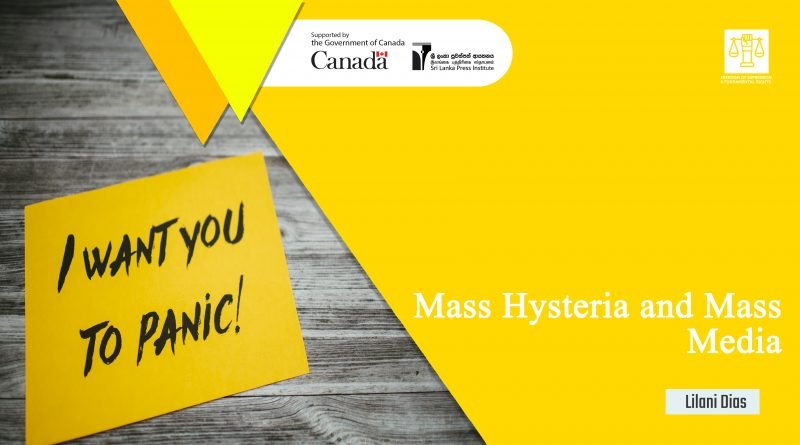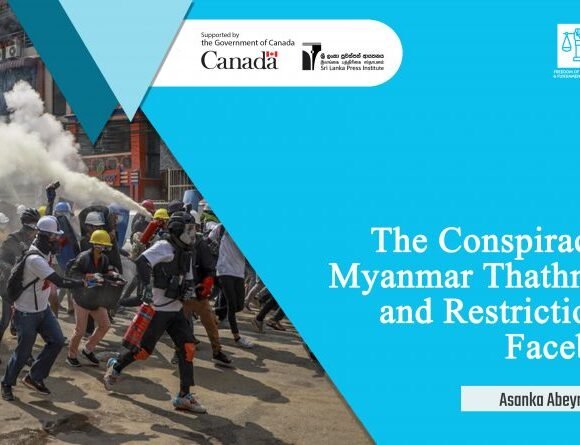
Mass Hysteria and Mass Media
Lilani Dias
In the age we live in, nothing escapes the eye of the media – this is often useful to spur action regarding matters that otherwise go unnoticed. When no one listens to you, and there are no other means of sharing your message, the last help you can expect to get in order to create some public awareness is from the media. From Edward Snowden to Channel Miller, the media has brought attention to various issues that would otherwise stay in the dark. Yet, we also have stories like that of Diana Spencer where the media was literally accused of murdering her, and court cases like O.J Simpson where the mass outrage and/or hysteria driven by the media has done more harm than good. Mass media’s coverage of events and the mass hysteria which follows are matters that are discussed more often today, as the impact media has on people’s lives, opinions, and attitudes increase by the day.
Mass hysteria is defined as “a condition affecting a group of persons, characterized by excitement or anxiety, irrational behaviour or beliefs, or inexplicable symptoms of illness”. For as long as humans have gathered into groups, there have been, and there are cases of mass hysteria which at times turn the whole socio-political structure upside down. In the past, the village rumour mill kept spinning stories for the people to share. The Salem Witch trials in the 17th Century provide a dangerous example of mass hysteria founded upon rumours. Today with the mediatized portrayals of events, there is mass hysteria surrounding Islamophobia, both globally and locally. The fears and anxieties regarding COVId-19, at its inception, have been so high that people were ready to attack their neighbours if they tested positive and were wary of those who came to the island from overseas. These examples show how media and hysteria share a relationship, where the former creates the latter.
Over and above mass media, the rates at which social media such as Facebook and Whatsapp spread frenzied messages and ‘news’ are quite alarming. Considering that more than half of these forwards and shares are fake, they are also capable of creating anxiety and irrational fears in people. So, these platforms are twice as damaging as traditional news channels. While people are aware of fake news, like moths to a flame, herd mentality enables the masses to share these messages. The situation of mass hysteria created by the media, therefore, needs serious attention.
We already have laws that govern news reporting and recently, with regards to the alarming levels of fake news that spread following the Easter Attacks in 2019 and the COVId-19 outbreak in 2020, the government and the security forces have taken measures to penalize the spread of false messages. Nonetheless, it is important to address the root causes as to why people knowingly fall prey to media frenzies. One reason is that people have lost faith in traditional news reports, as they feel that certain elements are not reported in an honest manner. Measures must be taken to ensure that important information is not withheld as it could lead to assumptions being made and spread. Transparency is necessary at a rational level as complete transparency is also not wise. Further, it is important that media personnel are made aware of media ethics and responsibilities- that just by having a camera and a notepad one does not become a journalist/reporter. Instead of relying on strict laws to reduce hysteria, regulation of mass media should happen.







